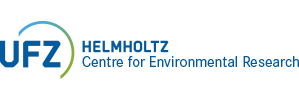Assessment of the bioaccumulation potential of super hydrophobic chemicals
The standard procedure for the assessment of bioaccumulation of chemicals cannot be readily applied for very hydrophobic chemicals because of the following reasons:
The major exposure route for super-hydrophobic chemicals is via food and not via water and gills. Feeding uncontaminated food as it is done in the standard test (OECD 305) would actually infer a clearance mechanism (via feces) that does not exist naturally without the simultaneous uptake via contaminated food. Due to very low water solubility and strong sorption effects it is very difficult to conduct standard experiments. For super-hydrophobic chemicals, sorption to TOC in the exposure water has a substantial effect on the up-take efficiency. Measurements of log Kow are usually not possible and estimation methods for log Kow of these compounds are not reliable. Up-take and distribution inside the body may be affected by molecular size and/or facilitated transport and it may take a long time until steady state is reached.
Building upon previous work (Larisch and Goss 2018, Ebert et al. 2023), in this project we will work on suggestions to overcome these problems in the assessment of super-hydrophobic chemicals.
Funded by: [Umweltbundesamt FKZ 3723 64 405 0, AZ: 80 710/0048]
Duration: [01.04.2024 – 31.03.2027]
Related own publications:
Ebert, Andrea, Juliane Ackermann, and Kai Uwe Goss. 2023. “Mechanistic Modeling of the Bioconcentration of (Super)Hydrophobic Compounds in Hyalella Azteca.” Environmental Science and Pollution Research, 50257–68.
https://doi.org/10.1007/s11356-023-25827-7
Larisch, Wolfgang, and Kai Uwe Goss. 2018. “Modelling Oral Up-Take of Hydrophobic and Super-Hydrophobic Chemicals in Fish.” Environmental Science: Processes and Impacts 20 (1): 98–104. https://doi.org/10.1039/c7em00495h.
https://doi.org/10.1039/c7em00495h
